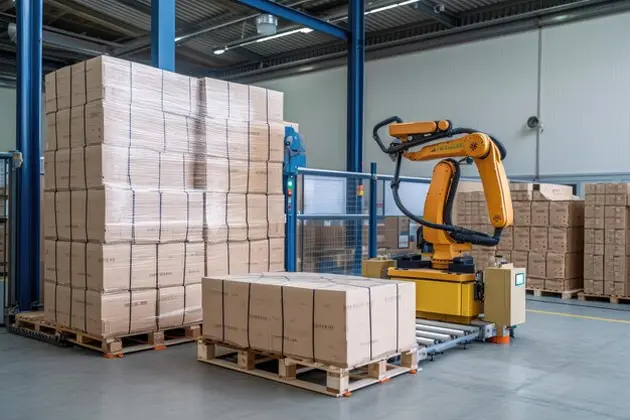Palletization is sometimes necessary for freight packing to keep shipments together, safe, and secure during transit.
Many people prefer pallet shipping as it’s a cost-effective way to move cargo. The pallets’ level surfaces provide a base for placing the cargo
Although it seems straightforward, palletization involves careful preparation to prevent mistakes that could harm the cargo. To shed more light on this, here are a few things you should do to keep your palletized cargo safe during transit:
Choose the right pallet
The safety of the freight during transit will be severely compromised if you choose the wrong pallet for shipment. Consider the pallet’s construction first, and steer clear of slippery materials like egg cartons that might move around during transportation.
Pallets built of robust wood are the best as they can withstand the weight of the freight. Such a pallet gives you peace of mind as you know it has the structural integrity you need to get your cargo to their destination.
To ensure that the pallet can carry the weight of the cargo and provide forklift access on all sides for loading and unloading, you should be cautious of the pallet size you choose. As a rule of thumb, ensure the pallet is the right size.
While at it, check for damage to the pallet boards and any indications of protruding nail heads. If present, avoid the pallet, as it will damage your cargo. It also could be weak hence unable to carry the weight.
Although wood pallets are the most common, there are also plastic, metal, and corrugated pallets that you can use. The choice is yours.
Secure your pallet correctly
When shipping pallets, it doesn’t hurt to take extra precaution. Many shippers use cargo straps to fasten the cargo to the pallets. If you opt to go this route, ensure that the straps are completely wrapped around the pallet and through the forks for proper freight containment, and they must be ratcheted in place for better fit and security.
You can also secure the freight with shrinking wrapping. If you secure your freight this way, wrap it five times from top to bottom, treating it as a single item.
If necessary, use top and corner protection. Cornerboards make the proper amount of hold force to the load without causing damage to the corners. Polythene top cover sheets can also shield the freight from moisture and dirt.
Properly load your pallets
Although selecting the appropriate pallet is important, it won’t matter if you don’t correctly load your pallet.
You should use the pallet footprint by spreading the weight of the items over the surface area as soon as you start loading. To ensure the weight is distributed equally, if you’re working with a small dispatch, you can begin in the center and work your way out.
Remember that overloaded pallets may topple over or collapse. As you can tell, this will result in time lost and expensive damage. You don’t want this, do you?
Your loads should not be larger than the pallet’s dimensions because doing so will make it impossible to wrap the pallet securely. Any overhanging items run the risk of being knocked during storage or transportation.
To prevent the contents of the cartons or boxes from shifting from side to side while being transported, fill the extra space with packing paper that will act as a cushion and provide impact protection.
Be ultra-cautious when stacking
The freight you need to ship should ideally be stacked. To make it easier to stretch wrap, you should place the cargo in boxes the same size as the pallet. After that, fasten the boxes into position and stack them on top of one another.
When stacking, ensure that the stacks are stable and secure before securing them. This is crucial because the containers could pose a major safety risk if left unattended at their destination.
Ensure the stable and heavy objects are at the bottom to avoid an unstable load. You should use the right polyester strapping to secure the heavy or awkward objects. If you don’t have it, use high-quality stretch film.
Any containers you use should be closed tightly to ensure the safety and security of both the container and its contents. Always place cardboard boxes on top of other boxes to prevent them from collapsing and weakening the stack’s structure.
Most companies prefer to package pallets in cardboard boxes when delivering a stack. Since the box may be disassembled at the other end to reveal the pallet stack underneath, cardboard is the best material for shipping.
Additionally, you can purchase pallet-optimized containers, which are made specially to make pallet shipping easier.
Ship your pallets with the right partner
Any logistics company worth its salt should have quality control in place. Such a company ensures that every pallet moving through its network is scanned, visually inspected, and photographed.
Regardless of the size of your business, have a quality check before the load is shipped to ensure it is suitable for transportation.
Before you hire a shipping company, put a lens on their organizational culture, health and safety protocols, and quality control.
The right shipping company will have the vital quality control measures in place to ensure no faulty or substandard pallets are shipped. This protects your cargo from damage and saves you a lot of money and time.










